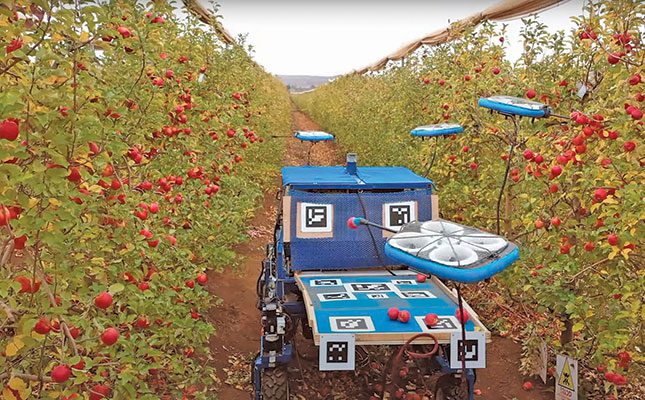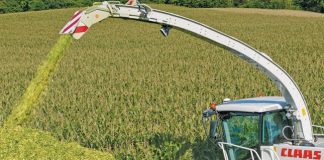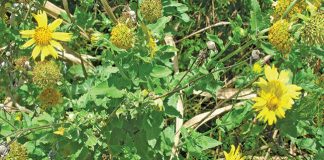
Photo: Supplied
Rising energy costs and rolling blackouts are taking a huge financial toll on local fruit producers by driving up production costs and causing losses in fruit quality.
The South African Petroleum Industry Association (SAPIA) states on its website that 0,05% (regular) diesel and petrol cost around R11/ℓ and R13/ℓ respectively at the start of 2017.
However, as of 4 January 2023, both prices had increased to over R20/ℓ, having reached highs of almost R25/ℓ (0,05% diesel) and just over R26/ℓ (petrol) in July 2022, according to SAPIA.
On top of this, the National Energy Regulator of South Africa (Nersa) recently approved an 18,65% electricity price hike for Eskom, which means that from April this year, electricity will cost 173,80c/kWh, up from 146,48c/kWh.
Nersa also approved an additional 12,74% electricity price increase for the 2024/25 financial year, which will take the price to 195,95c/kWh.
A worldwide dilemma
But this kind of situation is not unique to South Africa. Calla du Toit, procurement manager at Tru-Cape, says that the global energy crisis, caused by the rapid post-COVID-19-pandemic economic rebound and exacerbated by the Russia-Ukraine war, is forcing farmers around the world to rethink the way they use energy.
For example, in October 2022, Freshfel Europe, the European fresh produce association, issued a statement in which it called on authorities to take action to mitigate the impact of soaring energy costs on the fresh fruit and vegetable sector.
“Fresh produce businesses are at risk of serious economic hardship, and even bankruptcy, because of high electricity and gas prices combined with the rising prices of production inputs, services and logistics.”
Phillippe Binard, general delegate at Freshfel Europe, added: “We are estimating the [fresh produce] sector’s added energy costs to be around €6,8 billion [about R127 billion] for the current season from orchards up to the departure of fresh produce from packing stations.”
Binard added that there might also be additional energy costs for fresh produce down the line. If apple storage trends remain unchanged, for instance, the industry is looking at an added bill of close to €200 million (R3,7 billion) for this season, he said.
Du Toit says that storage in Europe has become so expensive that many producers there are no longer using it, and are instead trying to sell their fruit as soon as possible after it is picked.
“This is actually good news for South African farmers, as it will mean less competition on the market for fruit that can be stored for long periods, such as apples, during the South African production season,” he explains.
Alternative energy
Global energy prices are expected to continue rising for the foreseeable future. This was reflected at the Interpoma international trade fair, hosted in South Tyrol, Italy, in November 2022, which saw much emphasis on ways to overcome these surging costs and reduce the fruit sector’s carbon footprint.
Attending the event on behalf of Tru-Cape, Du Toit was struck by the emergence of an entirely new field of study, dubbed ‘new energies for agriculture’, that is examining ways to harness power from agricultural crops.
For him, the most interesting study in this regard is being conducted at the Laimburg Research Centre in Italy, where researchers are looking at the possibility of using photosynthesis to produce energy.
According to an article published on ScienceDaily.com, researchers from the Istituto Italiano di Tecnologia in Italy have already discovered that a single plant leaf can generate more than 150V, enough to simultaneously power 100 LED lightbulbs.
These same researchers also determined that a ‘hybrid tree’, with both natural and artificial leaves, could be used as a generator to convert wind power into electricity.
Another highlight of the event, according to Du Toit, was the Fraunhofer Institute for Solar Energy Systems in Germany’s display of its pilot project involving photovoltaic (solar) ‘nets’ in apple orchards.
He explains that this system addresses the problem of not having enough space to set up a solar-power system in an orchard by using these nets over the trees.
The nets also provide the trees with protection against hail, frost and drought, and create synergies in water management.
Du Toit explains that the nets take the form of transparent flexible panels, where only the photovoltaic cells are darkened, to ensure good light penetration into the orchards.
“They require a huge initial capital investment, but are a much more efficient use of space, especially in Europe, were land is limited, as it means that farms can now be used for both food and energy production,” he says.
South Africa has good reason to take advantage of this technological development, says Du Toit, considering how many hours of sunlight the country has every year.
The Department of Mineral Resources and Energy states that most areas in South Africa have an average of more than 2 500 hours of sunshine a year, with mean solar- radiation levels ranging between 4,5kWh/ m2 and 6,5kWh/m² in a single day.
Annual 24-hour solar radiation average is about 220W/m2 for South Africa compared with about 150W/m2 for parts of the US and about 100W/m2 for Europe and the UK, the website continues.
“Just think how farming [in South Africa] could be transformed if we were able to generate energy above the soil using photovoltaics, as well as [power] from the plants themselves,” says Du Toit.
Reducing energy costs
The skyrocketing price of electricity is also forcing farmers to plan their orchards more strategically.
“Instead of only looking at production when doing orchard planning, farmers now have to consider ways to reduce and save energy. “Some examples would be using gravity to irrigate orchards, or utilising variable-speed drive pumps to pump water,” says Du Toit.
At the Interpoma fair, much attention was given to the use of lithium-ion batteries as
power-storage units. According to Du Toit, these batteries can now be found in just about every piece of electric equipment used in an orchard, from chainsaws to electric pruners. What’s more, many of these devices can now be recharged inside orchards via solar-powered charging stations.
“Great strides have been made in [extending the life of lithium-ion batteries] before they need to be recharged, and [reducing] the time it takes to recharge them. Prices are also coming down as more of these devices are becoming available,” he says.
Another example is the development of foldable plastic bins. Du Toit explains that a truck that would previously have been able to transport only 78 stacked bins at a time can now carry 780 foldable bins, which translates into huge fuel savings.
Another major problem for the global fruit industry is the shortage of labour. Du Toit says it is becoming increasingly difficult to find people to work in orchards in the US, Europe, Australia and New Zealand, as most people simply don’t want to work on farms anymore.
Labour costs are also rising, so many farmers in these countries are either changing to crops that are less labour-intensive, or looking to robotics and automation to solve these problems.
According to Du Toit, one of the most impressive potential solutions on display at Interpoma was Tevel’s autonomous flying fruit-picking robot. Driven by artificial intelligence, the robot assesses the colour and size of the produce, so that only the ripe fruit is picked.
It is also equipped with sensors that guide it as it flies around the orchard, and suction tubes to gently pick the fruit without damaging it.
Du Toit believes that the adoption of robotics in other countries could present new marketing opportunities for South Africa, where there is an abundance of labour.
“Where other countries will be using machines to pick their fruit in the next few years, we might be able to get a premium for fruit that’s hand-picked.”
Email Calla du Toit at [email protected].










